
NFL stats: Scoring extremes clash in pair of Week 4 games
There have been some great offensive showings and some horrible defensive performances in the early stages of NFL 2023. There are two games in Week 4 that epitomize those words.
2023-09-30 04:28
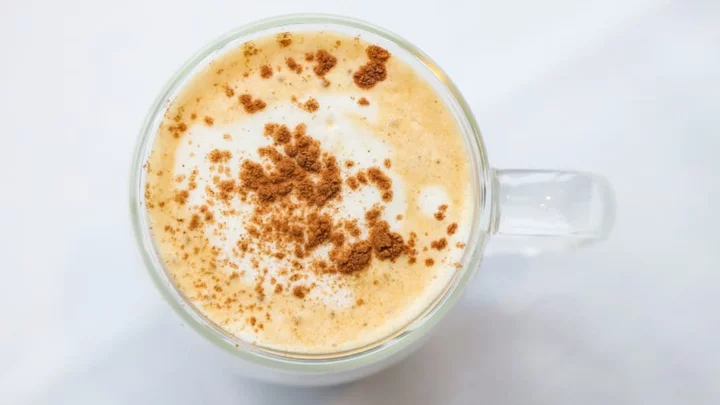
Make This Oat Milk Pumpkin Spice Latte at Home and Skip the Coffeeshop Line
You don't need barista experience to make a professional-quality pumpkin spice latte in your home kitchen.
2023-09-30 03:20
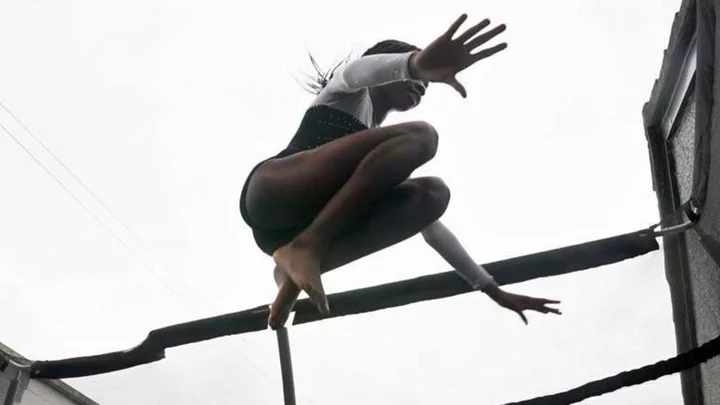
Gymnastics racism apology delay a 'real shame' - Irish PM
Leo Varadkar says there is "no place for racism in sport" after viral gymnast video controversy.
2023-09-30 01:19
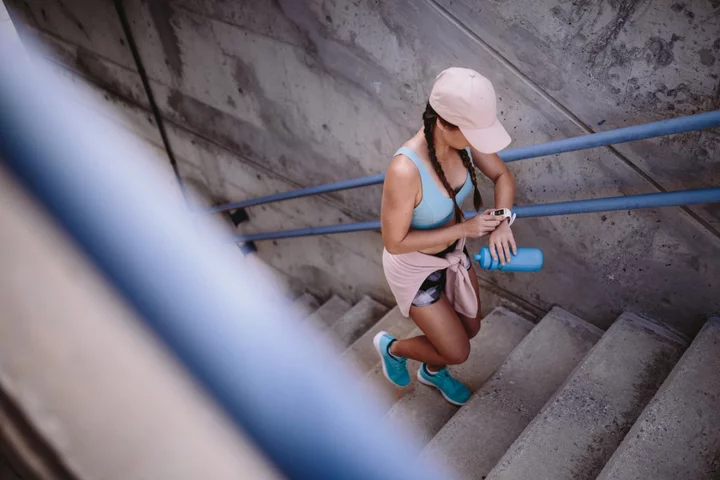
Climbing more than five flights of stairs a day can decrease the chances of heart disease, study suggests
Cardio isn’t so bad if you take it in small steps. Climbing at least 50 stairs each day could significantly slash your risk of heart disease, according to a new study. The research, published in the journal Atherosclerosis, found that ascending more than five flights of stairs daily could reduce the risk of cardiovascular ailments by about 20 per cent. Cardiovascular diseases such as Atherosclerotic cardiovascular disease (ASCVD) along with coronary artery disease and strokes are the leading causes of morbidity and mortality worldwide. “Short bursts of high-intensity stair climbing are a time-efficient way to improve cardiorespiratory fitness and lipid profile, especially among those unable to achieve the current physical activity recommendations,” said co-author Dr Lu Qi, HCA Regents Chair and professor at Tulane University’s School of Public Health and Tropical Medicine in New Orleans. “These findings highlight the potential advantages of stair climbing as a primary preventive measure for ASCVD in the general population.” For the study, researchers used data from a UK Biobank of 450,000 adults and participants were analysed based on their family history of cardiovascular disease as well as their genetic risk factors and established risk factors. Participants were also asked about their lifestyle habits and their frequency of climbing stairs, with the median follow-up time being 12.5 years. The results revealed that climbing more stairs daily reduced the risk of cardiovascular disease in those who were less susceptible, with Dr Qi saying the increased risk of heart disease in more susceptible people could be “effectively offset”. “This study provides novel evidence for the protective effects of stair climbing on the risk of ASCVD, particularly for individuals with multiple ASCVD risk factors,” Dr Qi added. ‘A significant training effect’ Dr Nicolas Berger, a senior lecturer in sport and exercise at England’s Teesside University, who was not a part of the study, says walking up staircases has more benefits than walking on a flat surface because it “requires the use of more muscles as well as some balance and gross motor skills.” He says even though these may be in “short bursts”, it still “requires a lot of activity from your cardiovascular system and that is why people often find themselves out of breath whilst climbing stairs. “These short, intermittent bursts of activity have large benefits in terms of reducing the risk of cardiovascular disease. They can significantly increase your heart rate and oxygen uptake and cause positive adaptations in the body,” Dr Berger adds. Although 50 steps a day might not seem like much “it can have a significant training effect.” This type of movement activates muscles such as the glutes, quads, hamstring and calves, as well as muscles in the core, Dr Berger says. If you are not much of a runner, Dr Berger suggests taking stairs may be a useful option. “It’s an attractive alternative to just walking or running for many, due to the easy access for most people in their houses or when out. “If there are no stairs available, walking up and down steep gradients also has similar benefits and demands. Getting up off the floor or low ground has benefits in terms of strength and balance, but not so much for the cardiovascular system. “Overall, incorporating this activity into daily habits for sedentary people, people at risk or anyone trying to stay healthy is a good suggestion,” he adds. Read More How many steps a day can cut risk of early death (and it’s not 10,000) Tread carefully: Do we really need to walk 10,000 steps a day? What I gained (and lost) by walking 10,000 steps each day for 5 months Is a four-day week a good idea? | You Ask The Questions 9 science-backed ways to lose weight without going on a diet A Japanese doctor who studied longevity — and lived to 105 — said if you must retire, do it well after 65
2023-09-30 00:16

Factbox-European countries who put curbs on Huawei 5G equipment
Germany last week became the latest European country to propose restrictions or bans on the use of equipment
2023-09-29 19:45

California fast-food workers to earn minimum of $20 an hour under new law
(Reuters) -Fast-food workers in California will earn a minimum of $20 an hour and have a greater say in setting
2023-09-29 17:49
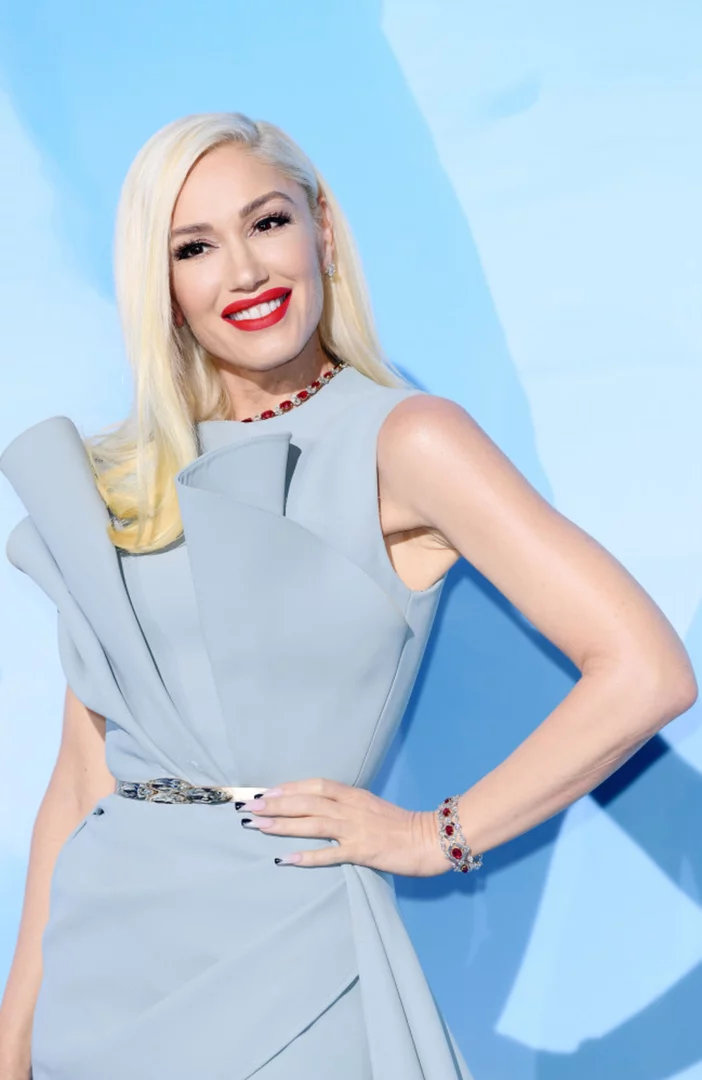
Gwen Stefani's stage makeup is her 'armour'
Gwen Stefani finds doing her own makeup for concerts "very therapeutic".
2023-09-29 17:25
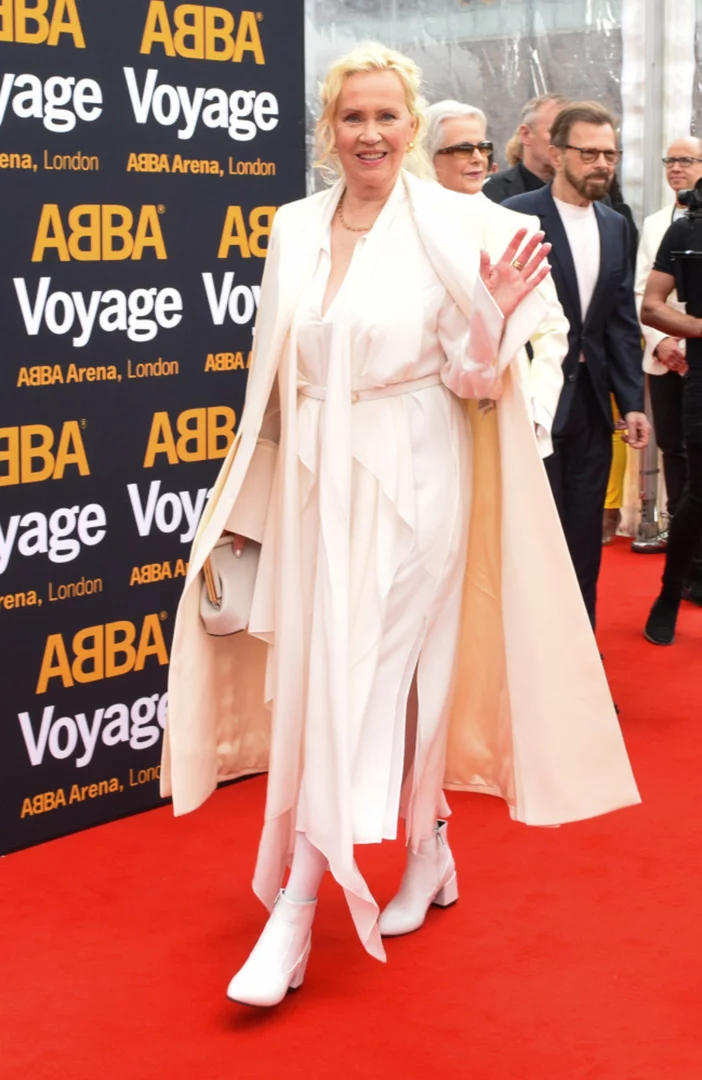
ABBA's Agnetha Faltskog and Gary Barlow share new version of I Should’ve Followed You Home
Agnetha Faltskog and Gary Barlow first released the song a decade ago.
2023-09-29 17:16
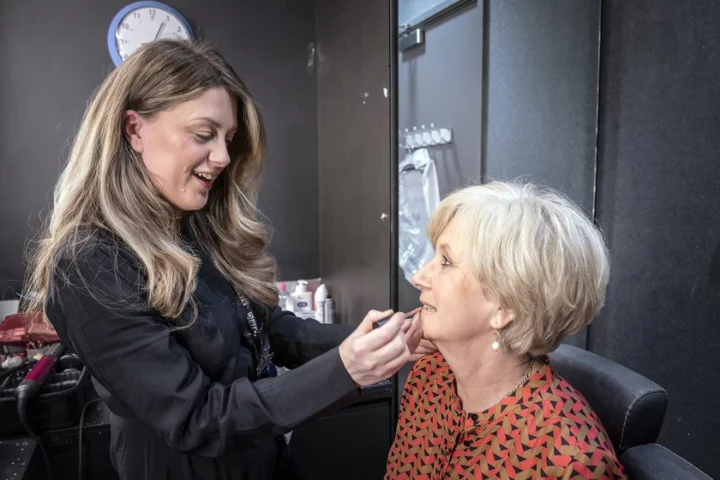
This is how your make-up needs change as you age
Whether you’re in your 30s or your 60s, your skin probably doesn’t look and feel like it did at the age of 20 – and that’s OK. But if you’ve barely upgraded the make-up you’ve been using for years, it might be time to do so. “As we age, our skincare and make-up needs change, and it’s important to adapt our beauty routines to address the specific concerns that come with each decade,” says Co. Kildare-based make-up artist Suzie O’Neill, owner of vegan cosmetics company Ayu. Over time, your skin loses elasticity and oils, so in all age groups solid skincare is key. “Regardless of age, a good skincare routine is essential for a smooth make-up application,” O’Neill says. “Prioritise moisturising and using sunscreen daily.” She advises using products rich in vitamins A, C and E – to protect the outermost layer from water loss in your 30s, a decade where “skin becomes more delicate and cell turnover is slowing down, making your complexion look dull”. So how should we switch up our make-up in our 40s and beyond? In your 40s Collagen and elastin production naturally decrease during this period, leading to a reduction in skin firmness and elasticity in your 40s, O’Neill says. To combat this, she recommends incorporating a serum with ingredients like hyaluronic acid, peptides and retinol, which can help stimulate collagen production. Foundation is the most important make-up upgrade to make at this period of your life. “Your 40s are the ideal time to switch to a foundation that is more hydrating and lighter than what you might have used in your 20s and 30s. Heavy, matte foundations tend to settle into fine lines and wrinkles, which can accentuate them. A hydrating and lighter foundation is a better choice as your skin may become drier and more mature.” O’Neill advises using a moisturising lipstick or balm to keep lips hydrated, as they can start to become drier at this time in our lives. “The cumulative effects of sun exposure can become more apparent in your 40s, leading to pigmentation issues, fine lines and potential sunspots,” she adds. So a broad-spectrum sunscreen is “non-negotiable”. In your 50s When it comes to make-up, your 50s may be a time when you opt for a more natural look. “A light to medium coverage foundation or a tinted moisturiser [will] not only provide a subtle, youthful glow, but also allow the natural character of the skin to shine through,” notes O’Neill. “Less is often more at this stage.” She recommends focusing on techniques that lift and brighten the eyes. “For example, tight-lining – applying eyeliner to the upper waterline – can make lashes appear thicker and eyes more prominent. Apply eye make-up with a light hand and choose softer, neutral shades that open up the eyes and give them a more refreshed appearance.” It’s common for lips to appear to lose volume by our 50s, so O’Neill suggests using a lip liner in a shade closely matching your natural lip colour. “It can work wonders by creating the illusion of fuller, more voluptuous lips. “Eyebrows and eyelashes tend to thin out as we age; filling in sparse brows with a brow pencil or powder and using volumising mascara can help restore the appearance of full, youthful brows and lashes.” In your 60s and beyond As you enter your 60s, you could opt for warmer hues. “As our skin naturally loses some of its warmth and pigmentation, opting for a foundation with warmer undertones can help counteract any sallowness that may occur,” says O’Neill. “[But] choosing a foundation that matches your skin tone as closely as possible is essential.” You also might notice an increase in pigmentation irregularities on your skin. “To even out pigmented skin, I’d recommend using a colour-correcting concealer for spots and discolourations (orange or peach-toned concealers can help neutralise dark spots) followed by a lightweight foundation or BB cream to even out skin tone,” she says. “Use setting powders sparingly as they can emphasise fine lines. Opt for a finely milled, translucent powder applied lightly only where needed.” And don’t be afraid to experiment with colour in your 60s. “Using more colour can be a great way to combat dullness that often accompanies ageing skin. “Brighter shades of make-up, such as lipsticks, eyeshadows, and blush, can help liven up your complexion.” Blush can help brighten up your skin, with O’Neill recommending cream versions as “they tend to blend more seamlessly and provide a dewy, hydrating finish”, and can be easily applied with your fingers. “Just remember to choose shades that complement your skin tone and apply them sparingly for a natural flush,” she adds. As you age, splurging on make-up isn’t a must, she says, but investing in high-quality make-up products that cater to your specific needs can be beneficial. “Look for products that provide essential hydration [and] achieve a luminous glow. “The key is to enhance your natural beauty rather than mask it.” Read More Charity boss speaks out over ‘traumatic’ encounter with royal aide Ukraine war’s heaviest fight rages in east - follow live Victorian dahlia show recreated at Stonehenge with thousands of flowers Daily activities could help lower heart attack risk, study suggests From tiredness to sweating – subtle warning signs something could be wrong with your heart
2023-09-29 16:51

From tiredness to sweating – subtle warning signs something could be wrong with your heart
People can go years with no idea they have something wrong with their heart. Symptoms can be vague and subtle and many heart conditions are ‘hidden’ – meaning they’re not obvious from the outside. “Hidden heart conditions often go undiagnosed for too long, until something goes wrong or it’s too late,” says Sindy Jodar, senior cardiac nurse at the British Heart Foundation (BHF). “That’s why it is important to never ignore the signs of heart disease and get yourself checked, just to be sure.” While some warning signs are easy to spot – such as severe chest pain and collapse – there are also many little indicators that something could be wrong with your heart or circulatory system. These won’t necessarily mean you have a heart problem, but it’s always best to have them investigated. From tiredness and nausea to fainting, here are some of the less obvious symptoms everyone needs to know about… 1. Feeling unusually tired Dr M Adil U Khan, a GP at Pall Mall Medical, says you should not “ignore or downplay unusual levels of tiredness”. While it’s normal to feel exhausted if you’ve been very busy or lacking sleep, he adds: “Feeling unusually tired, especially if it’s not related to exertion, should be investigated.” It could be due to something like anaemia, a virus, or even linked to mental health. It could also be related to your heart, so it is important to have it investigated. 2. Subtle discomfort “Look out for subtle discomfort in different areas of your body, including discomfort or pain in the jaw, neck, back, or stomach, which can be associated with a heart problem,” says Khan. If symptoms are out of the norm for you and aren’t going away, it’s always best to get them checked. 3. Unusual swelling Perhaps you have noticed your ankles look particularly puffy, or maybe it’s your general tummy area that’s constantly swollen for no apparent reason. “Unexplained swelling, known as oedema, in the legs, ankles or abdomen, may also be signs of heart failure,” explains Khan. 4. Vomiting and a choking sensation Sudden vomiting or a choking sensation in your throat is something to be wary of too. “While not every bout of nausea means there could be something serious happening, feeling sick combined with other aches and pains, such as severe chest pain, should ring an alarm bell,” says Jodar. Yes, it could be a stomach bug, but if you are having sudden spells of vomiting and nausea more regularly and you’re not sure why, don’t delay in get things checked out. 5. Fainting If you experience sudden fainting, this is a big indicator of something being awry. “If fainting or any other symptom becomes a problem, consult a healthcare provider and schedule an appointment with a doctor or cardiologist,” says Khan. “Discuss your symptoms, medical history and risk factors with them. “Your healthcare provider will assess your vital signs and perform a physical examination. Depending on your symptoms and risk factors, you may undergo diagnostic tests like ECGs, echocardiograms, stress tests, blood tests, or more specialised cardiac assessments,” he adds. 6. Shortness of breath Struggling to catch your breath is not a trivial matter. “Anyone experiencing shortness of breath during everyday activities or at rest should see their doctor,” says Khan. This is especially the case if it’s accompanied by chest pain – even if it doesn’t seem especially severe. Khan adds: “Mild chest discomfort should always be investigated, but some people mistake this for indigestion or muscular pain.” 7. Unusual sweating “Feeling hot, clammy and quite sweaty when you haven’t been doing strenuous exercise shouldn’t be ignored,” adds Jodar. “If this is combined with chest pains, it’s important you get yourself looked at.” 8. Heart rate irregularities Does your pulse sometimes feel jumpy or too fast? Get it checked with your doctor. Khan says: “Smartwatches and fitness trackers can provide valuable data about your heart rate and may detect irregularities to some extent. They can help track general trends in heart rate, especially during physical activity or rest. “However, they are not a substitute for medical-grade monitoring and evaluation… Any concerning symptoms should be evaluated by a healthcare professional for a comprehensive assessment and diagnosis,” Khan adds. Read More Charity boss speaks out over ‘traumatic’ encounter with royal aide Ukraine war’s heaviest fight rages in east - follow live Breast Cancer Awareness Month: 9 brilliant beauty buys supporting good causes Smokers 2.6 times more likely to give birth prematurely Female students ‘more than twice as likely’ to be affected by poor mental health, research shows
2023-09-29 15:57

Factbox-Evergrande founder joins list of Chinese tycoons investigated, arrested
The founder of China Evergrande, the world's most indebted property developer, is being investigated for "illegal crimes", a
2023-09-29 15:23
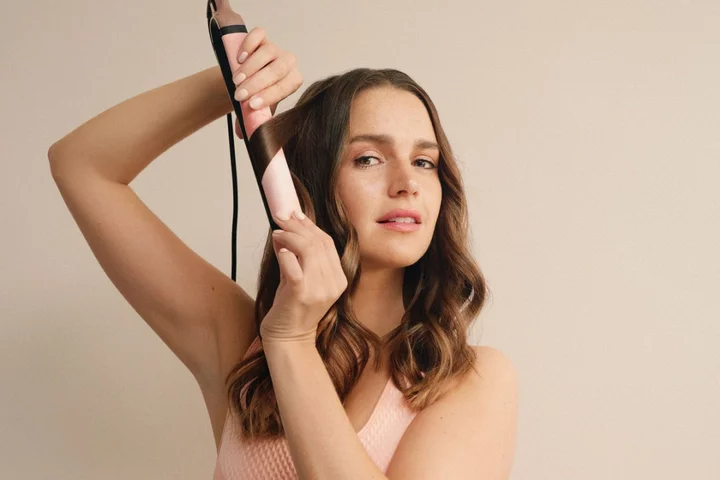
Breast Cancer Awareness Month: 9 brilliant beauty buys supporting good causes
A wave of pink products washing over the beauty world can only mean one thing: Breast Cancer Awareness Month is back. This October, with the Barbie pink trend still going strong, there’s even more reason to snap up a rose-tinted treat for yourself or a loved one. From nail polish and make-up to skincare and hair tools, here’s our pick of this year’s best charitable beauty buys… 1. Mavala Limited edition Power of Pink Mini Colour Pink Pastel, £6.40, LookFantastic For the third year running, Mavala unveils its Power of Pink range of skincare and nail varnishes, with £1 from the sale of each product going to the Pink Ribbon Foundation. We love the Power of Pink Pastel polish, a cute ballerina-pink shade that suits everyone. 2. Trinny London Sherin Lip2Cheek, £26 Fans of TV presenter turned beauty entrepreneur Trinny Woodall’s eponymous brand love the versatility of the creamy Lip2Cheek pots, which can be used as blusher, lipstick or eyeshadow. Named after Trinny London customer Sherin, who is living with secondary breast cancer, this shade is a warm brown. For every pot sold, 10% of sales will be donated to Breast Cancer Now. 3. Bobbi Brown Powerful Pinks Crushed Oil Infused Gloss Duo, £38 Bobbi Brown’s luscious lip gloss duo, worth £50, brings together two botanical oil-infused pink hues, with proceeds going to the Breast Cancer Research Foundation (BCRF). Soft peachy-pink In The Buff is perfect for everyday wear while plummy Slow Jam is an ideal evening option. 4. Clinique Limited Edition Moisture Surge 100H Auto-Replenishing Hydrator, £40 If you’re yet to try Clinique’s incredible Moisture Surge, now’s the perfect time to experience the lightweight but ultra-hydrating day cream loved by beauty buffs. For every pot of the limited edition sold, £10 will be donated to the BCRF. 5. Philip Kingsley No Scent No Colour Duo Shampoo and Conditioner, £42.24 (was £48) Inspired by trichologist Philip Kingsley’s wife’s battle with breast cancer, these fragrance-free essentials were formulated for use during chemotherapy. Ideal if you’ve got sensitive skin or dandruff, they contain salicylic acid and green tea extract to promote scalp health. For every bottle sold, 50p will go to cancer charity Look Good Feel Better 6. Estee Lauder Pink Ribbon Advanced Night Repair Serum Limited Edition, £89 Devotees of Estee Lauder Advanced Night Repair – one of the first skincare serums, launched back in 1982, and still a bestseller – love its rejuvenating, collagen-boosting powers. For October, the usually brown bottle gets a hot pink transformation, with a 20% donation from sales going to BCRF. 7. Elemis Pro-Collagen Rose Micro-Serum, £90 Packed with rose-infused microdroplets, this dual-phase serum works to strengthen the skin barrier, hydrate the skin and reduce the appearance of fine lines. For every serum sold, Elemis is donating £10 to Look Good Feel Better in support of their workshops and services. 8. Jo Malone Peony & Blush Suede Cologne, £118 for 100ml A long-time supporter of BCA month, Jo Malone this year introduces a special edition of the classic Peony And Blush Suede Cologne, with £20 from every bottle sold going to the BCRF. Decorated with a floral print and a pink ribbon, the fragrance features notes of red apple, pink peony, jasmine and rose. 9. GHD Platinum+ Styler Pink Limited Edition, £239 For creating poker-straight strands or glossy waves, the GHD Platinum+ with hair-protecting technology is second to none. This marbled pink limited edition comes with a free zip-up pouch, with £10 for each sale going to Breast Cancer Now or €10 to the Irish Cancer Society. Read More Charity boss speaks out over ‘traumatic’ encounter with royal aide Ukraine war’s heaviest fight rages in east - follow live Smokers 2.6 times more likely to give birth prematurely Female students ‘more than twice as likely’ to be affected by poor mental health, research shows Many parents of under 5s on less than £50k ‘quit work due to childcare costs’ – survey
2023-09-29 14:47
